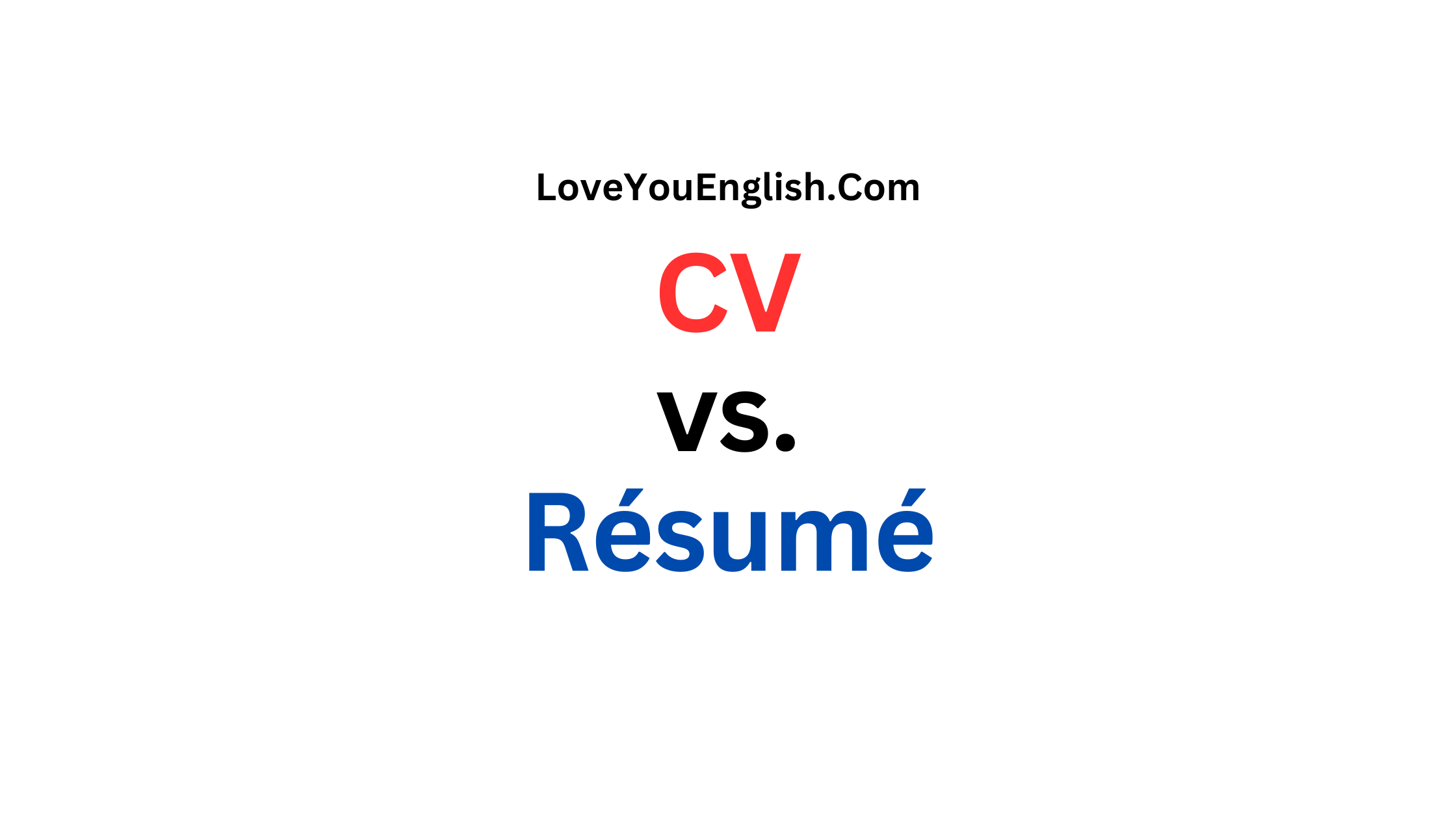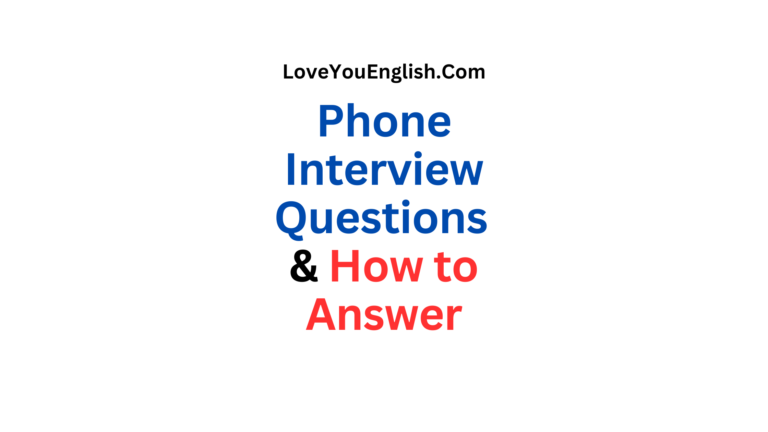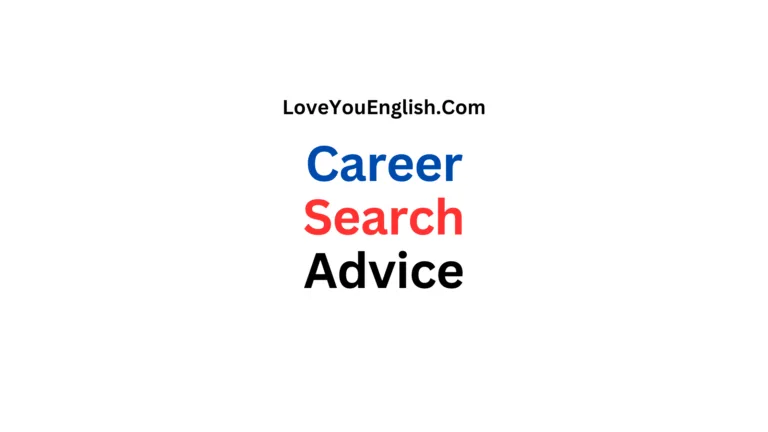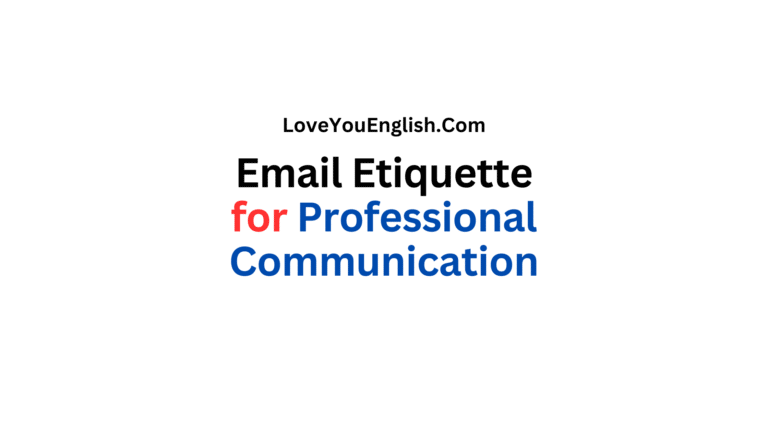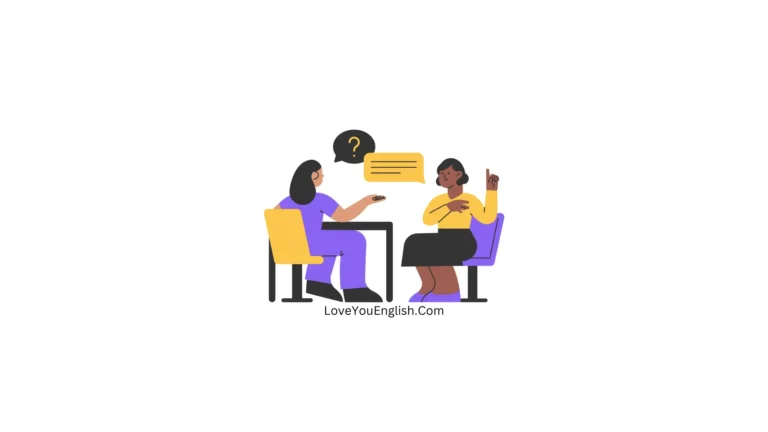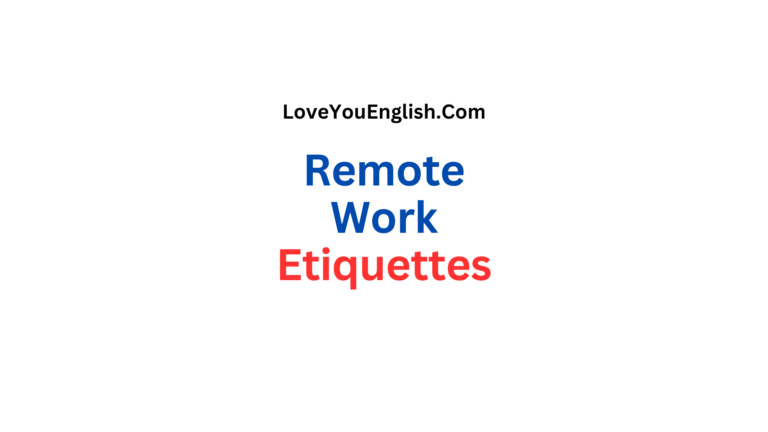CV vs. Résumé: What’s the Difference?
CV vs. Résumé: What’s the Difference?
When you’re applying for a job, you often hear two terms used interchangeably: CV and résumé.
While they may seem similar, they are actually quite different, especially depending on where you’re applying.
Knowing the distinction between the two can help you decide which one to use in your job applications.
I will break down the differences between a CV and a résumé.
By the end, you will have a clear understanding of each document’s purpose, structure, and when to use them.
What is a CV?
A Curriculum Vitae (CV) is a Latin term that means “course of life.”
It is a comprehensive document that provides a detailed overview of your entire career history.
It’s often much longer than a résumé and includes all your academic qualifications, work experience, skills, research, publications, and other professional activities.
Key Features of a CV:
- Length: A CV can be multiple pages long (typically 2-3 or even more). This is because it is a complete record of your career.
- Content: A CV includes everything you’ve done professionally—education, certifications, research, publications, presentations, professional achievements, volunteer work, and more. It’s meant to give an in-depth view of your career.
- Format: The format of a CV is often more flexible. It doesn’t follow a strict one-page rule like a résumé does. The goal is to provide as much information as possible about your professional life.
- Use: CVs are most commonly used for academic, research, or scientific positions. If you’re applying for a job in education, research, medicine, or a similar field, you will likely need to submit a CV.
- Geography: CVs are typically used in Europe, the Middle East, Africa, and Asia. However, in countries like the United States and Canada, the term “CV” is used mostly for academic or research positions, while “résumé” is more common for other types of jobs.
What is a Résumé?
A résumé is a shorter, more concise document than a CV.
The word “résumé” comes from the French word meaning “summary.”
It’s a summary of your work experience, skills, and education, tailored specifically to the job you are applying for.
The goal of a résumé is to quickly highlight the most relevant parts of your career to convince the employer to invite you for an interview.
Key Features of a Résumé:
- Length: A résumé is usually 1-2 pages long. You want to keep it short and focused, offering just the essential information that is relevant to the job you’re applying for.
- Content: A résumé is focused on your work experience and skills. It includes a brief summary of your career history, education, and qualifications, but it doesn’t go into the same level of detail as a CV.
- Format: Résumés are usually formatted in a clean, simple way. It’s common to list your most recent job experience first and work backward, highlighting achievements and skills related to the job you’re applying for.
- Use: Résumés are typically used for most job applications in non-academic fields. They are the standard document used when applying for jobs in business, technology, marketing, healthcare, and many other industries.
- Geography: In the United States and Canada, résumés are the standard job application document for most industries. In these regions, the term CV is used mainly for academic or research roles.
Key Differences Between a CV and a Résumé
Now that we’ve looked at what each document is, let’s focus on the main differences.
Here’s a breakdown:
| Feature | CV | Résumé |
|---|---|---|
| Length | Long (2 or more pages) | Short (1-2 pages) |
| Detail | Provides detailed information about education, work experience, publications, etc. | Focuses on the most relevant work experience, skills, and education |
| Purpose | To provide a comprehensive career history | To quickly highlight qualifications for a specific job |
| Use | Academic, research, scientific positions | Business, technology, and most other industries |
| Geography | Common in Europe, the Middle East, Asia, Africa | Common in the United States and Canada |
| Flexibility | Flexible format, no strict page limit | Strict page limit (1-2 pages) |
| Customizability | Not usually tailored to a specific job | Often customized for each job application |
When to Use a CV
A CV is necessary when you’re applying for positions where you need to provide an exhaustive list of your career history.
Here are some examples of when to use a CV:
- Academic Jobs: If you are applying for a job at a university, such as a professor or researcher, you will need a CV. This is because academic jobs require you to list all of your publications, presentations, and educational background.
- Research Positions: Research roles, especially in science or medicine, often require a CV because these positions value detailed information about your experience and contributions.
- Medical and Healthcare Roles: For positions like doctors, surgeons, or other healthcare professionals, a CV is often used to detail your academic background, certifications, and professional experience.
- International Job Applications: In many countries outside the United States, including the UK and parts of Europe, a CV is used for all types of job applications.
When to Use a Résumé
A résumé is more commonly used in business, marketing, technology, and similar fields.
Here’s when to use a résumé:
- Corporate Jobs: If you’re applying for a job in a business environment, such as marketing, finance, or human resources, you will need a résumé. The employer is usually looking for a quick snapshot of your skills and experience.
- Technology and IT Jobs: Résumés are used in the tech industry to highlight your technical skills, certifications, and relevant work experience.
- Creative Industries: If you are applying for a job in advertising, media, or design, a résumé will often be more suitable. You will want to showcase your relevant skills and creative achievements.
- Job Applications in the U.S. and Canada: In these countries, a résumé is typically the document you need for most job applications outside of academia or research.
How to Create a CV
If you’re applying for a job that requires a CV, here’s how to structure it:
- Contact Information: Start with your name, phone number, email, and address.
- Professional Profile: A brief paragraph summarizing your career and skills.
- Education: List your educational qualifications, including universities, degrees, and specializations.
- Work Experience: Provide a detailed list of all your relevant work experience. Include the company name, job title, dates of employment, and your key responsibilities and achievements.
- Research and Publications: Include any research work, publications, or presentations you’ve contributed to. Be as detailed as possible.
- Awards and Honors: List any professional recognitions, awards, or honors you’ve received.
- Skills: Highlight any specific skills, such as languages, technical skills, or certifications.
- References: Include references from previous employers or professors.
How to Create a Résumé
Here’s a simple guide to writing a résumé:
- Contact Information: Include your name, phone number, email address, and location.
- Objective or Summary: A brief sentence or two summarizing your career goals or the position you’re applying for.
- Work Experience: List your most recent job first. Include your job title, the company name, the dates you worked there, and a few bullet points describing your main duties and accomplishments.
- Education: Include your highest level of education, such as your degree, university name, and graduation year.
- Skills: List any relevant skills related to the job, such as software, languages, or certifications.
- References: Optional. You can state “Available upon request.”
Final words
In summary, the main difference between a CV and a résumé lies in the length, detail, and purpose of each document.
A CV is more comprehensive and used in academic and research settings, while a résumé is a concise summary of your qualifications, tailored to a specific job.
Understanding these differences can help you prepare the right document for your job application, making you more competitive in your job search.
When in doubt, always read the job description carefully and check whether the employer requests a CV or résumé.
The right document will help you stand out and land that dream job.

